Can Certain Sunglasses Actually Make You a Better Photographer?
![]()
In ways much like the chicken and the egg, it is tough to distinguish which came first, my love of photography, or my obsession with optics.
As a young kid, I would go to the local sunglasses stores and grab all the promo literature they had and take it home to read, sometimes even putting it in my backpack so I could look at it during lunch recess. Saying I was a sunglass nerd is only wrong in that it is past-tense — I am still a sunglass nerd. I can still remember saving for months of my earnings from mowing people’s yards and delivering the penny saver papers so that I could buy my very first pair of Oakleys (original Mumbos with a sweep lens in smoke). I had extra silk cases for them and would take them apart and clean them almost daily. It is not an exaggeration to say the routines I use to clean my cameras and lenses started with how I cleaned sunglasses when I was 10.
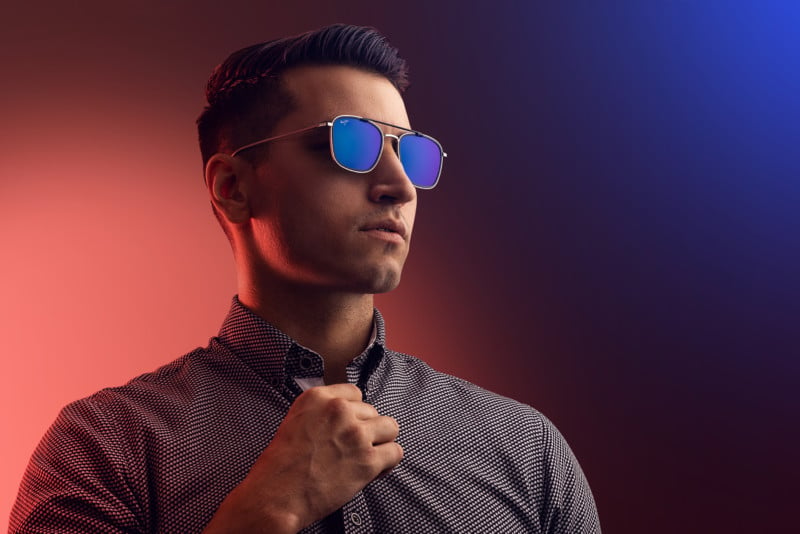
As time went on, I naturally gravitated to working at a sunglasses shop in the mall when I was in high school. It was a job I loved as I worked at a store in the quiet section of the sprawling facility. I would clean sunglasses all day and try them on, all while getting paid. It should be noted that the money I earned from that job went directly towards buying my first camera, a Canon A2E. When I graduated high school and went to college, I left the sunglass world behind me to focus on developing my photography career while also focusing on my studies. However, when success started to pick up with photography, I often would pay a visit to the local sunglass shops for a reward here and there.
Lately, reminiscing about that time got me thinking: “What type of sunglasses are out there that not only complement photographers, but might even benefit their photography?”
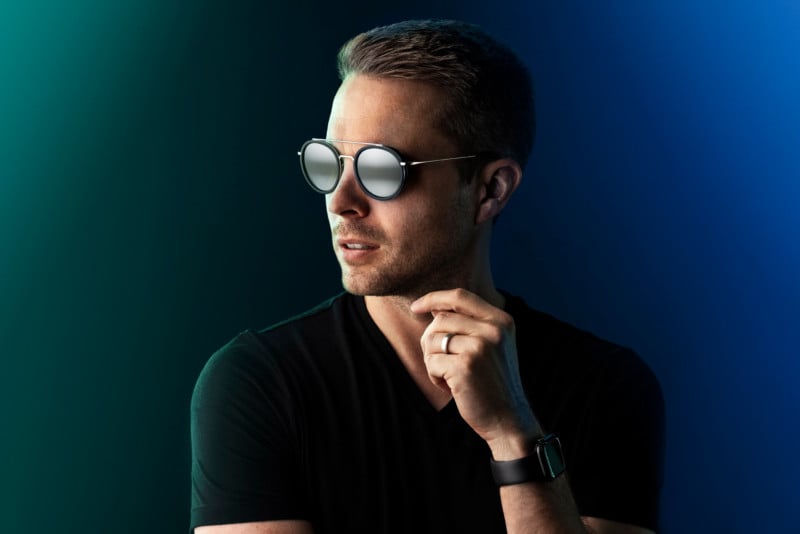
There are some photographers that are probably asking themselves, “how could some glass help my photography?” and there are others that are on the same wavelength as me. The art we create through the camera lens doesn’t stop when we go out without the camera. In many ways the images I have created only exist because of experiences and scenes that I have witnessed while on vacation, or walking to the store, or being stuck in traffic. I am talking about the mental background plates that show you a color palette or sunlight forming a mountain in a certain way or clarity in a cloud formation in the sky. These are all images that only exist with the right lens – on your sunglasses.
As I started compiling the reasons I gravitate towards some sunglasses during specific photoshoots, while wearing other pairs on different sets, the aspect that stood out the most to me was the lenses. Some pairs featured polycarbonate lenses, while others featured actual glass lenses. Both have their pros and cons, but for clarity and color reference, glass lenses have always been my go-to. I figured it would be best to talk about a couple of sunglasses that still utilize glass lenses, as they are essential to me when out at the train tracks studying the light.
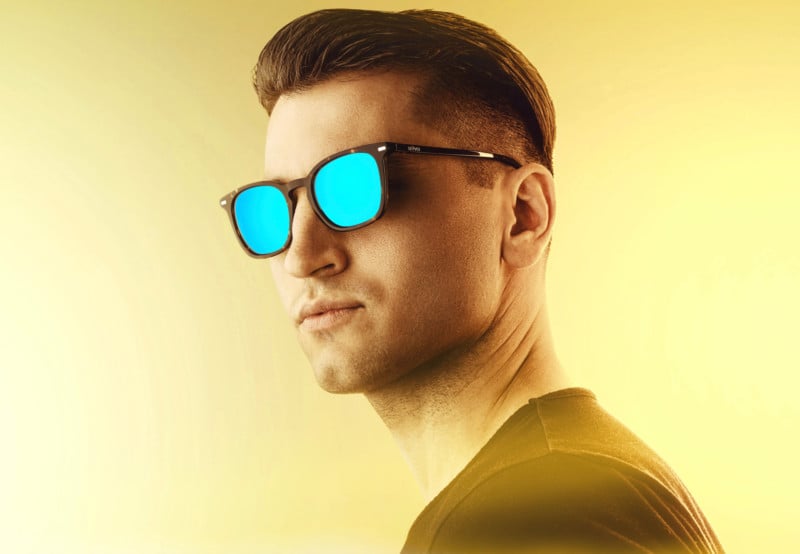
The first pair that I checked out are Watsons by the sunglass maker Revo. My passion for Revo’s started in the sunglass shop I worked at as a teenager. They made incredibly well put together sunglasses with heavy glass lenses that had a distinct reflection on them. The background behind them is one that I enjoy the most, as they are a direct result of NASA developing windows for the satellites. For a science and space junky like myself, there is a certain amount of pride in the idea that the technology that went into discovering and photographing galaxies can be worn on someone’s face. I still have and wear a pair of Revo Cobras from the 1990s on a regular basis as they feel like I am looking through a warming filter.
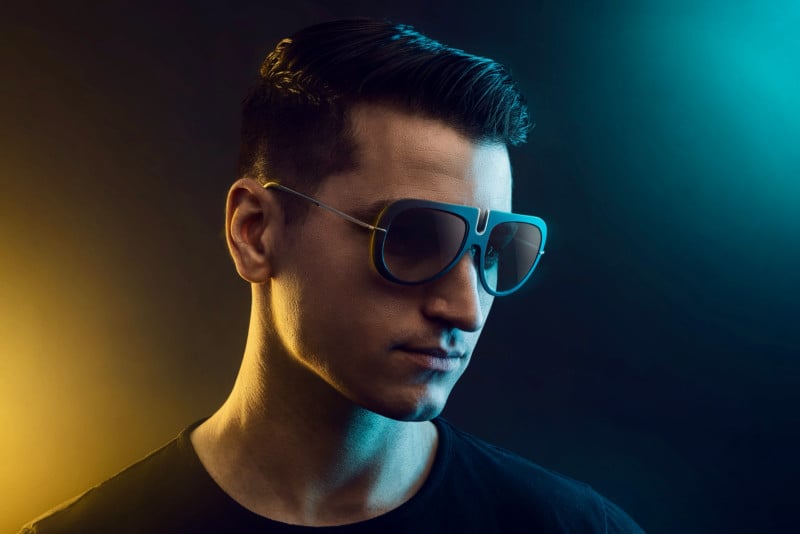
What I enjoy out of the new Revo Watsons with the Revo Blue lens is the control of the blue light on top of the polarization. There is a clarity from them that helps prep my vision for one of my train shots as the haze from draw distance goes away and helps me focus more on the colors at hand that I can then adjust during the RAW file development to match. In many ways, wearing specific sunglasses while out creating photos can have an impact on the final images.
The second pair of sunglasses that I have been wearing a lot lately are Vuarnet Edge 1613s. These are sunglasses that captivated me for a number of different reasons, not the least of which is the passion that goes into them. Each pair of sunglasses can take up to 14 days to make and are created by a single person. With their manufacturing headquarters in France, there are some that take on a very pronounce European design and color palette.
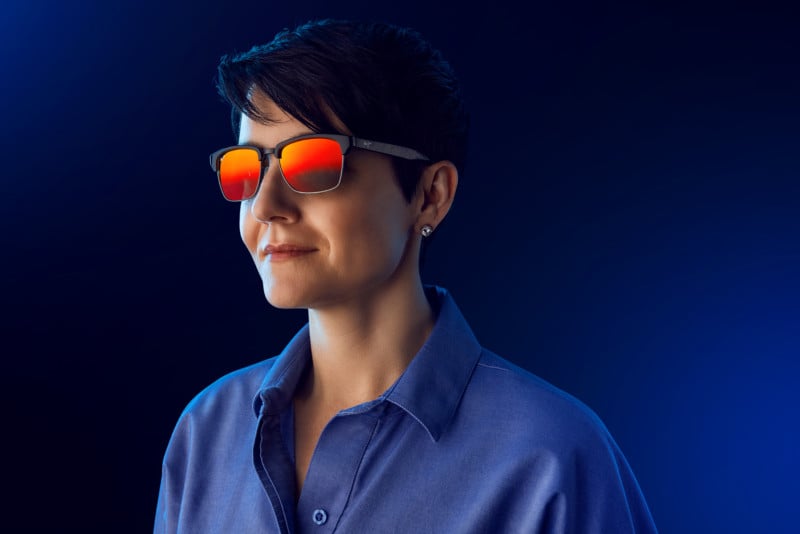
The ones I chose, though, are matte black, for two reasons. The first is that I wear different sunglasses with different outfits, and having a black pair is essential, and the second reason… is because these are the sunglasses that Daniel Craig wears. Yeah, I will admit to thinking quite highly of him, as he is my favorite Bond of all time, and having seen him wear these glasses, there is a certain amount of badassery that surrounds them.
From a photographic standpoint, the Vuarnet Edges are extremely helpful while on a location shoot, or even while out scouting in the early morning or around sunset. The way they help is with the body curvature around the outside of the lenses. Think of this pair of sunglasses as having a built-in lens hood that dramatically cuts down flare that would normally sneak in through the gap around your temple. To complement the flair control, they also have glass lenses that make for extreme clarity on set. With the lenses on my specific model not being polarized, it is also possible to look at an LCD without any of the blackout effects getting in the way. One final aspect of this pair that I always notice is that the back of the lenses has an anti-reflective coating as if the physical flare blocking wasn’t enough.
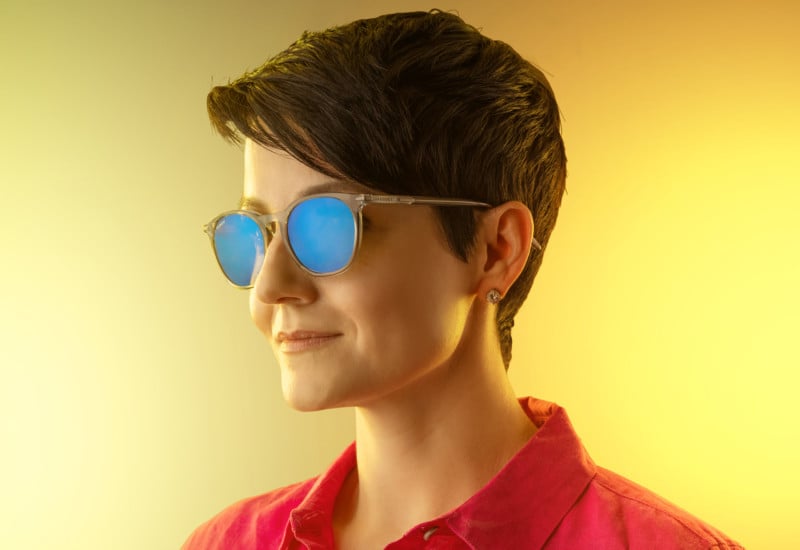
Next, we come to not one, but three pairs of sunglasses all made by Maui Jim. When I started talking with Maui Jim for their input for this story, I realized very quickly the strong relationship between camera optics to sunglasses. Concepts such as neutral density filters came to mind as we discussed their applications of mirror finishes to base layer lenses. We discussed the image characteristics given to a pair of sunglasses that has a neutral grey lens coated with a reflective green mirror, and the idea of looking through this had me excited. When we discussed the pieces that would be fun to mention in the article, it was an interesting blend of style and lens tonality. Instead of landing on one, we decided that three (red, green, and blue) lenses should be looked at.
For red we chose the Kawika, as it is very characteristic of Maui Jim’s heritage style in Hawaii. For green with went with the Shore Break, a smaller framed contemporary pair with crystal frames, and for the blue, we tried the Following Seas, an aviator-inspired two-tone frame pair of sunglasses that has one of the deeper blue mirrors I have ever seen on a pair of sunglasses.
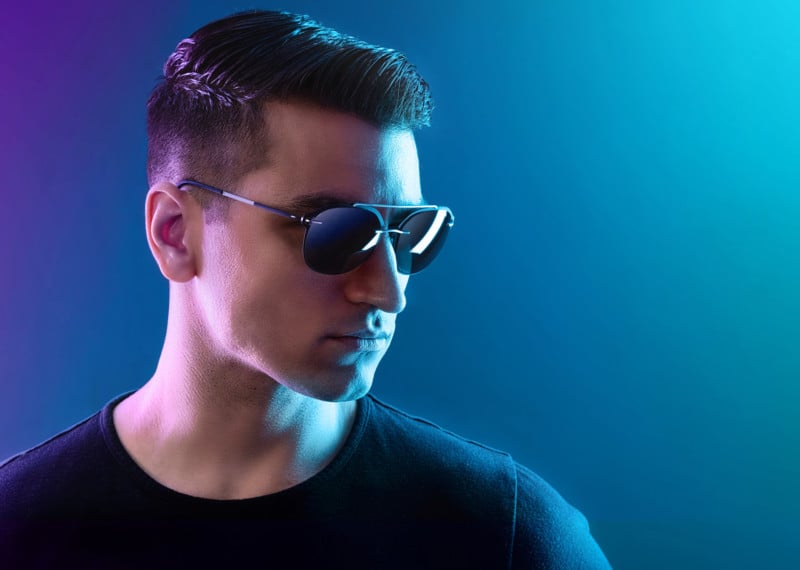
What is interesting about Maui Jim sunglasses is how absolutely neutral the world looks through them. Green tree leaves have an absolute greenness to them, while the bark of the tree still maintains a deep brown without any red cast to it. The Maui Green lenses tended to put a bit of a magenta feel in clouds that weren’t warm, as much as contrast building in the white clouds against a blue sky. Where the photo nerd in me digs these glasses is that the vignetting of them takes on not just a tonal density, but a color shift. Looking through the center of the lens may have neutral colors, but the edges of it shift to warmer more gold tones. It is definitely an effect that is worth checking out.
Next, we have a sunglass line that I have been very familiar with since the early 1990s. My Dad, like me, has always been one to look at sunglasses for their optical quality above all and had a pair that I can vividly remember. Even when I was 10 years old, I would ask him if I could borrow his Serengeti’s to look around. While their optical quality hasn’t changed, Serengeti’s designs and frames have become more modern and fashionable. This means that the world around can look great, while you look great as well.
For this story, I tried the new Arlie crystal frames with a polarized blue lens. The first thing you will notice if you set the Serengeti’s next to all the other frames is how much more light transmission they produce. What is even more interesting is this is all done through glass lenses that are polarized. The hue of the lens is a grayish-green (even if the mirror is blue), and they are wonderful to wear even after sunset as they make the world around sensational. The Serengeti’s are sunglasses that would go well with someone trying to shoot at dusk with a DSLR as the light transmission doesn’t hinder the brightness of a viewfinder. I think my next pair will be brown lenses though, for the nostalgia of wearing my Father’s sunglasses as a kid means a lot to me.
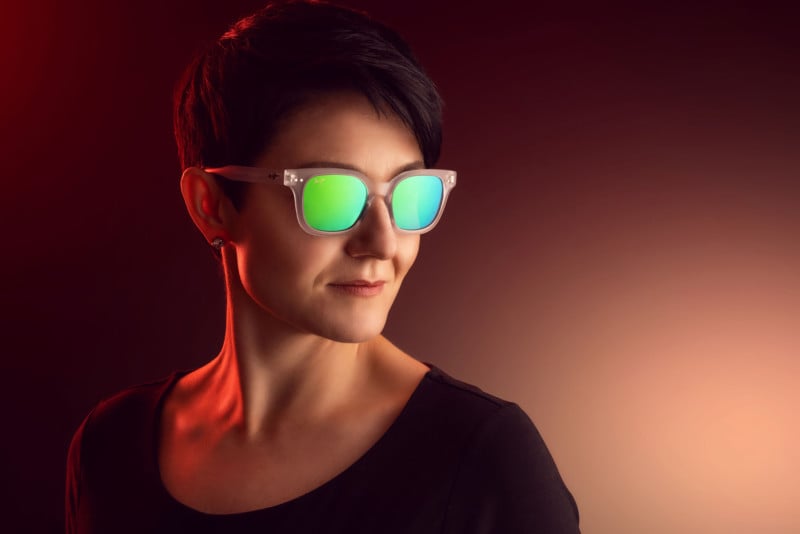
The final brand I want to talk about is a bit different than all the other pairs in this story, for they feature polycarbonate lenses, rather than glass. The brand is Silhouette, and they have been based out of Linz, Austria since 1964. Their frames are the lightest I have ever worn (especially the Cobenzl), and often after having them on for a little bit of time, I have to remind myself that I have sunglasses on. For advertising photographers, there are few glasses as stylish and unique as them, and their feel and look of complete refinement is something to behold.
Silhouette sent out two pairs to check out, and to say they are different from each other is to say that 300mm and 16mm lenses have a “different” look. The first pair that I tried on were the Cobenzl’s (as previously mentioned). While the lens is not glass, Silhouette have taken a different route that caters to photographers. They have focused (no pun intended) on minimizing (or eliminating) distortion in their lenses. As we all know, how curved elements can sharpen some areas while blurring other areas slightly, this is not the case with Silhouette sunglasses as they are all built together for perfection. The second Silhouette pair is the most out-there of the lot: the Futuras. They are a design that has been with Silhouette since the 70s, and vintage pairs of them can go for many thousands of dollars. They are definitely a pair of sunglasses that take a bold personality to rock, but damn do they get attention.
As you can probably tell by now, I am a complete geek for sunglasses and probably spent more time on this article than any other before it. I was very fortunate to speak to all the companies that I wanted to feature and can’t say thank you enough to everyone for their time. Some calls were literally hours talking about the sunglasses industry, how special it is and how important it is to invest wisely into protecting your eyes as they are your career.
About the author: Blair Bunting is an advertising photographer based in Phoenix, Arizona. You can see more of his work on his website, blog, Facebook, and Instagram. This story was also published here.